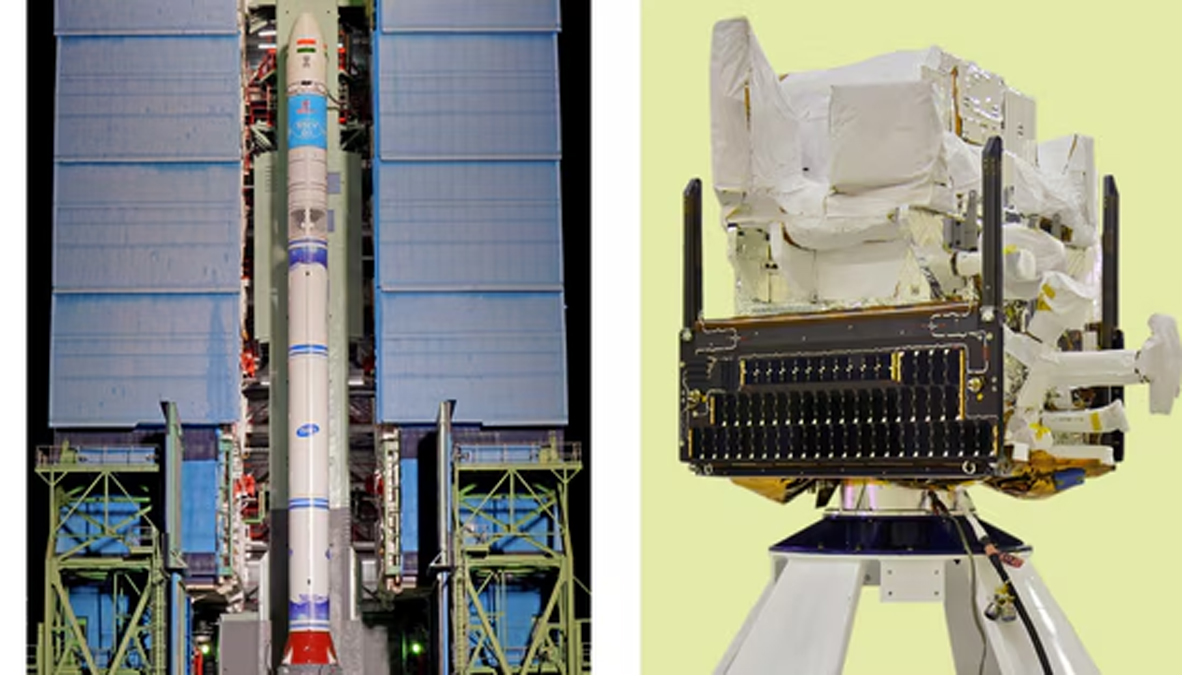
Nellore (Andhra Pradesh): The Indian Space Research Organisation (ISRO) is set to launch the third developmental flight of the Small Satellite Launch Vehicle (SSLV) on Friday, August 16, at 9:17am from the Satish Dhawan Space Centre in Sriharikota, Andhra Pradesh.
If the launch is successful, it will complete the development of the SSLV, which is ISRO’s small-lift launch vehicle. This rocket can carry satellites weighing up to 500 kg and place them in Low Earth Orbit (up to 500 km above Earth).
ISRO’s Earth Observation Satellite-8 (EOS-8) is expected to be launched by the Small Satellite Launch Vehicle (SSLV)-D3 on Friday from Sriharikota in Andhra Pradesh.
The launch of the third developmental flight of SSLV is scheduled for August 16, 2024, in a launch window of one hour starting at 9.17 am, ISRO said in a post on X.
Visuals from the space centre showed students and other individuals arriving to witness the launch.
“I have come to ISRO to see the satellite launch. It is a unique experience. I wish the scientists good luck for their hard work,” Greeva Agarwal, a student said.
A research engineer working in Chennai (Tamil Nadu), Pranav said that he was excited to witness the launch.
“This is the first time I am witnessing a launch through the launch gallery but I have been to ISRO, I had a tour of the ISRO campus in 2018. Being here and witnessing the launch is exciting for me. I wish all the very best to all the scientists of ISRO who have been working here. This is the first time I heard about SSLV and it is great to be here,” Pranav said while speaking to ANI.
EOS-08 is ISRO’s latest Earth Observation Satellite, slated for launch by the Small Satellite Launch Vehicle (SSLV)-D3. The spacecraft is designed for a mission duration of one year.
The primary objectives of the EOS-08 mission include designing and developing a microsatellite, creating payload instruments compatible with the microsatellite bus, and incorporating new technologies required for future operational satellites, an ISRO release said earlier.
Built on the Microsat/IMS-1 bus, the EOS-08 carries three payloads: the Electro-Optical Infrared Payload (EOIR), the Global Navigation Satellite System-Reflectometry Payload (GNSS-R), and the SiC UV Dosimeter.
The EOIR payload is designed to capture images in the Mid-Wave IR (MIR) and Long-Wave IR (LWIR) bands, both during the day and night, for applications such as satellite-based surveillance, disaster monitoring, environmental monitoring, fire detection, volcanic activity observation, and industrial and power plant disaster monitoring. The GNSS-R payload demonstrates the capability of using GNSS-R-based remote sensing for applications such as ocean surface wind analysis, soil moisture assessment, cryosphere studies over the Himalayan region, flood detection, and inland waterbody detection
